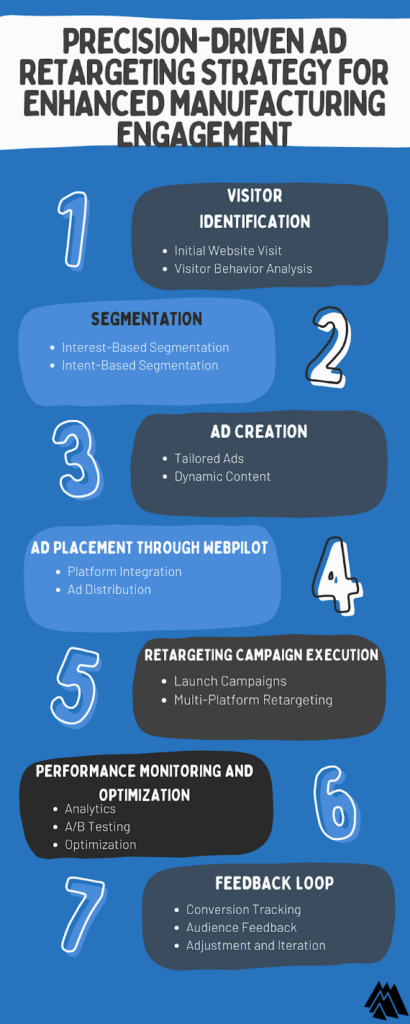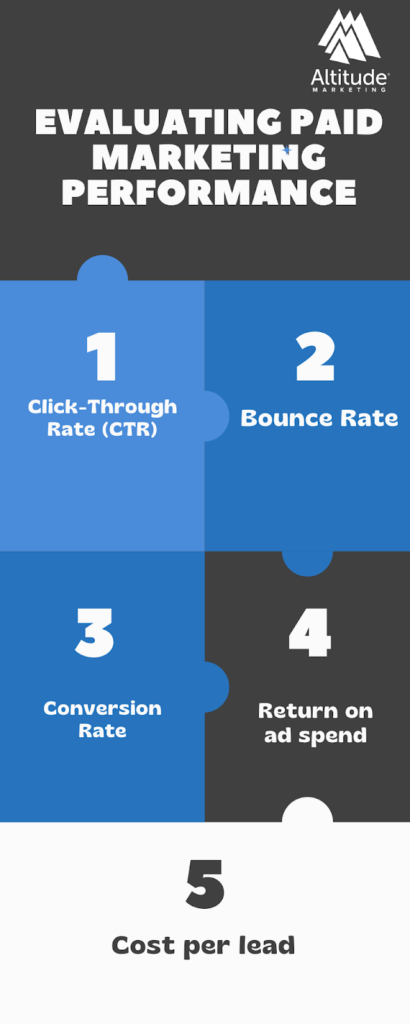Marketing is crucial for any business–but in the B2B advanced manufacturing industry, it presents complex challenges. Manufacturers make intricate, technical products that require detailed explanations when promoting to potential buyers. They deal with long sales cycles, niche target audiences, limited budgets, and fierce competition. Paid marketing is an essential tool for manufacturers to cut through the noise and achieve critical business objectives.
This guide will explore the world of paid marketing, specifically for manufacturing companies. We will examine the different types of paid strategies leveraged in this industry and how they align with buyer interests and behaviors. When thoughtfully combined and monitored, these paid tactics can drive greater visibility, engagement, and, ultimately, sales. Of course, paid efforts must adapt as consumer preferences and the digital landscape evolve. By remaining agile and data-driven, manufacturers can connect with the right audiences and see optimal returns from their ad spend.

Overview
What is Paid Marketing for Manufacturing?
Paid marketing targets people online using ads that require monetary investment. It can come in the form of search ads, social media ads, and other formats. This helps manufacturing companies reach potential buyers. Used correctly, the strategy increases the chance of getting sales and leads.
That’s because you can target the right audience with both precision and speed. But there’s a catch. Buyers trust paid advertisements less than organic content. You might be able to reach the right people, but there’s less guarantee they will take the right action (like clicking on your website).
Still, you need to get the word out. Just having an amazing product won’t bring success on its own. You need to tell people about it. Paid market is the fastest (and sometimes most effective) way to do this.
Types of Paid Marketing for Manufacturing
Manufacturers employ a variety of B2B marketing strategies to effectively promote their specialized products and technical services to potential prospects. These data-driven campaigns are tailored to match buyer interests, align with target audience search habits, and build on previous interactions with the brand across channels. When properly executed, paid strategies can be highly successful, regardless of budget constraints.
1. Pay-Per-Click (PPC) Advertising
PPC advertising has demonstrated immense value over time as a go-to paid marketing approach. Paid search marketing now accounts for a full 65% of all clicks on search engines, consistently outperforming organic search results. The reason is simple–visitors from PPC traffic convert into buyers at a 50% higher rate compared to organic search. These figures underline how efficiently targeted PPC efforts can deliver motivated, high-intent website visitors and buyers.
2. LinkedIn Ads
In the B2B marketing world, especially for manufacturers, people usually favor LinkedIn advertising over other social media marketing. That’s because LinkedIn can be a laser-guided tool that lets brands target specific groups or even specific decision-makers within a company. When you’re spot on with targeting, your ads resonate with the right crowd. While typically more expensive than other social networks, LinkedIn is by far the most potent tool for B2B marketers.
3. Influencer Marketing
A newer strategy, influencer marketing, has emerged as an extremely effective paid media tactic, especially on social platforms. This approach provides an alternative to traditional interruptive advertising by partnering with a real person with followers you want to reach. Their established credibility and expansive reach allow brands to tap into engaged communities and loyal followers. Influencer marketing has now surpassed print advertising in overall efficacy.
In the realm of manufacturing, influencer marketing has proven highly effective, leveraging the credibility and reach of industry influencers to engage communities.
Types of manufacturing influencers might include:
Manufacturing Influencers:
- Thomas Net – Leading manufacturing industry portal and Thomas Publishing Company CEO Tony Uphoff
- Jason Etcovitch – Founder/Publisher of JET Digital Media publishing blogs and podcasts focused on manufacturing.
- Dhruvil Sanghvi – CEO of LogiNext, a logistics/supply chain platform. Influencer in manufacturing tech and Industry 4.0
- Allison Grealis – Vice President at the National Association of Manufacturers (NAM)
4. Affiliate Marketing
Affiliate marketing involves partnering with relevant sites and platforms to promote products. It works by having affiliates advertise offerings to their audiences in exchange for a percentage of any generated sale. Manufacturing brands provide creative assets and messaging for affiliates to incorporate on their platforms.
When conversions occur through an affiliate link, the referrer earns commission based on the transaction value. This performance-based arrangement shares the marketing risk and incentivizes affiliates to connect authentic audiences with relevant products. Successful implementation relies on identifying affiliates reaching your niche target demographics.
How Affiliate Marketing Strategy Works for Manufacturing Companies:
| Step | Description |
| Affiliate Partnership | The manufacturing company forms partnerships with affiliates in the industrial and manufacturing community. |
| Promotional Content | Affiliates create content (blog posts, videos, social media) showcasing the manufacturing company’s products, and embedding unique affiliate links. |
| Tracking and Commission | Unique affiliate links allow tracking of traffic and sales generated by affiliates. Affiliates earn a commission for each sale or lead resulting from their efforts. |
| Target Audience | Affiliates target a relevant audience, including other manufacturers, industrial businesses, or professionals in need of the specific equipment offered by the manufacturing company. |
| Mutual Benefit | Affiliates earn commissions, while the manufacturing company gains increased exposure, reaches a broader audience, and drives potential customers to its products. |
5. Ad Retargeting
Ad retargeting aims to reconnect with website visitors through strategic ads on other sites displaying products they previously browsed. For example, suppose target buyers visit a manufacturing brand’s website but leave without making a purchase. In that case, retargeting offers remind them of platforms they frequent with prominently displayed messages conveying they left items in their cart.
The ads also showcase follow-up promotional prices or free shipping without requiring complex sales funnels. This increases the chance of motivating buyers to finalize a transaction. The key is placing ads on reputable, high-traffic sites aligned with audience behaviors using eye-catching banner or video formats. Brands must take care to avoid over-targeting buyers or promotional fatigue. When used appropriately, retargeting helps manufacturers recapture valuable leads.
Here is a glance at the ad retargeting strategy for enhanced manufacturing engagement:

6. Content Promotion
Promoting educational, insightful content through paid avenues makes audiences more receptive to manufacturing products by building awareness and trust. For example, promoting an engineering-focused case study detailing a technical product’s applications through LinkedIn Direct Sponsored Content positions the brand as a trusted expert.
This content establishes credibility and nurtures prospects prior to sales conversations, while links facilitate lead collection. Similarly, an instructional troubleshooting video promoted on YouTube raises visibility around solving common pain points. Geo-targeting refines reach, and tab-format link extensions support clicks to specific sections of websites. Content promotion executed consistently generates more qualified, sales-ready leads over time by organically embedding brands into buyer journeys from awareness through consideration and decision.
7. Video Advertising
Video advertising on streaming, social media, or website platforms enables manufacturing brands to dynamically showcase products through sight, sound, and motion. Captivating demonstrations and testimonials influence buyer decisions much more profoundly than static images or text alone. Video ad sequencing further sustains engagement across the sales funnel by nurturing leads.
For example, early introductory videos explain key product details to interested visitors first interacting with a brand, while subsequent videos shared via retargeting highlight buyer success stories, awards, and advanced technical specifications to motivate final purchase deliberations. With video projected to comprise over 85% of Internet traffic by 2024, embracing rich multimedia content provides manufacturing brands an advantage.
5 Factors for Picking Paid Marketing Platforms
Several key factors should be analyzed when selecting paid marketing platforms for manufacturing brands’ advertising efforts. Evaluating elements such as the target audience, ad formats, and costs will enable brands to decide which platforms are best suited to help them achieve their buyer acquisition and engagement goals. Consider these five before investing:
1. Target Audience
Gaining an in-depth understanding of the demographics, interests, and geographic location of a platform’s users is essential to determining alignment with your target buyers. This analysis will reveal whether a platform can effectively reach your ideal buyers. Matching the audience to your goals boosts the likelihood of engagement.
2. Ad Format
Paid platforms offer a range of ad formats, including text, display banners, video ads, and sponsored content. Manufacturing brands should study the available options and select the formats that are most appropriate for conveying their messages in an attention-grabbing way to resonate with their identified buyer personas.
3. Costs
Investigating the typical cost per click (CPC) or other pricing models on paid platforms provides estimates of potential ad expenditure. This, along with analyzing overall budget needs, equips brands to allocate their resources wisely toward high-value platforms. Keeping costs sustainable is key.
4. Industry Relevance
Research on which platforms have proven successful, specifically among manufacturing clientele or within your niche target market, is crucial. Analyze if competitors already have an advertising presence to determine relevance. Relevant platforms strengthen engagement.
5. Ease of Use
Seeking out paid media platforms with user-friendly, intuitive interfaces for managing campaigns enables efficient optimization. Understand the learning curve for utilizing built-in tools as well when assessing the capabilities of marketing teams. Complex platforms have a higher barrier to generating results.
Evaluating Paid Marketing Performance

Measuring performance is crucial to determine the success of paid campaigns. Key metrics to track include
1. Click-Through Rate (CTR): The percentage of ad clicks versus impressions. Higher CTRs indicate effective messaging.
2. Bounce rate: The percentage of visitors who leave the site after one page. Lower bounce rates are better for engagement.
3. Conversion rate: The percentage of visitors taking desired actions like purchases. Higher conversions mean better targeting.
4. Return on ad spend (ROAS): Revenue generated per amount spent on ads. Aim for a high ROAS.
5. Cost per lead (CPL): Expenditure needed to acquire a lead. Lower CPL indicates greater campaign efficiency.
Continuously monitor and analyze these KPIs to identify opportunities to improve campaign outcomes.
Analytics and Reporting
Robust analytics and reporting capabilities are vital within paid platforms. they provide invaluable data on critical campaign performance indicators. Manufacturing brands can leverage these insights to continually optimize their targeting, messaging, creative assets, and other parameters to boost engagement and conversion rates.
FAQs
1. What kinds of paid ads work best for manufacturers?
Good paid ad types for manufacturers include:
- Search ads to reach people looking into products
- Social media ads for visibility and engagement
- Video ads to show products and build awareness
- Retargeting ads to connect again with site visitors
- Advertorial content to promote products naturally
2. How can manufacturers measure the success of paid campaigns?
Important ways to track performance:
- Sales revenue and conversions
- Number of leads or inquiries
- Website traffic from paid sources
- Engagement rate for social and video ads
- Click-through-rate and cost per click
- Return on ad spend (ROAS)
3. What mistakes should manufacturers avoid in paid marketing?
Common mistakes to avoid:
- Misleading ad copy or big claims
- Unclear or weak call-to-action
- Not testing and improving ads regularly
- Leaving out contact info and links
- Only focusing on top-of-funnel tactics
- Not integrating with other marketing efforts
Closing Thoughts
Paid marketing helps manufacturing companies get their message out, engage with people, and drive sales. A full digital strategy with powerful paid efforts like PPC and social media ads boosts growth.
This guide covered different types of paid marketing for manufacturing, challenges, new trends, tools, best practices, and more. With the right data-focused approach, manufacturers can connect with buyers and meet business goals.
The key is researching audiences carefully, tracking performance, improving campaigns, and staying flexible. When done thoughtfully, paid marketing can provide great results.



